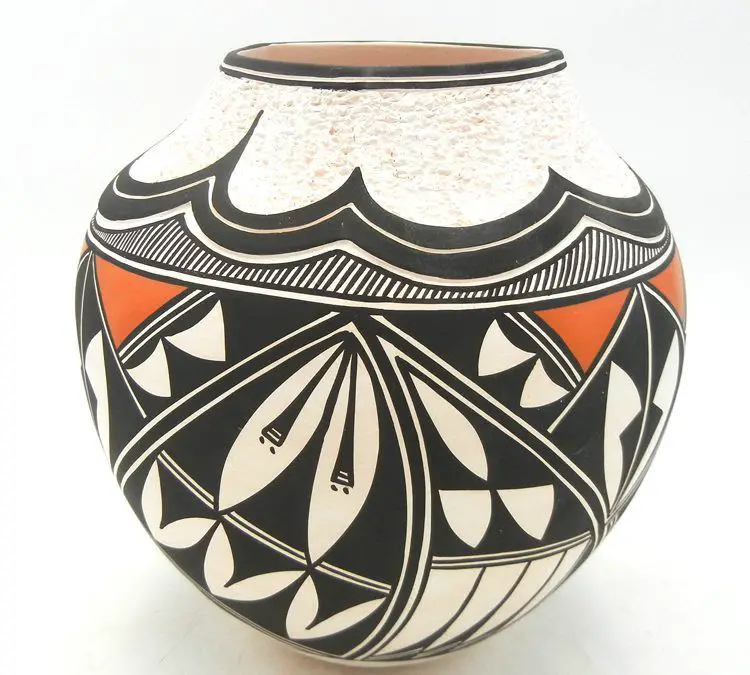How Do You Activate Kaolin Clay?
What is Kaolin Clay?
Kaolin clay, also known as China clay, is a soft white clay mineral that is found in deposits around the world. It is composed mainly of kaolinite, which is a hydrated aluminum silicate. Kaolin clay has a very fine, soft texture and an earthy odor.
Some common uses for kaolin clay include:
- Skincare and cosmetics – Kaolin clay is added to facial masks, scrubs, and other skincare products because it is thought to absorb oil, toxins, and impurities from the skin. It also adds a smooth texture.
- Medicine – Taken internally, kaolin clay is used as an antidiarrheal and to treat nausea, intestinal conditions, and other digestive issues.
- Paper – Kaolin clay gives paper a smooth, glossy finish. It is also used to coat paper to make it thicker and more durable.
- Porcelain – Kaolin clay is an essential ingredient in porcelain and china. It gives the ceramic strength and a glossy white color when fired.
- Paint – Kaolin clay is added to some paints as an extender and filler. It helps make the paint more durable.
Why Activate Kaolin Clay?
Kaolin clay in its raw state is full of impurities that can be harmful to skin. Activating the clay removes these impurities through a cleansing process and creates a clay that is safe and beneficial to use. Here are the key differences between activated and non-activated kaolin clay:
Impurities: Non-activated kaolin clay contains impurities like heavy metals, pollutants, and toxins. Activating the clay removes these impurities.
Safety: The impurities in raw kaolin clay make it unsafe to use, especially on sensitive skin. Activated clay is purified and gentle enough even for sensitive skin types.
Effectiveness: The cleansing process that activates the clay improves its ability to absorb toxins and impurities from skin. Activated clay is more effective in skincare applications.
Texture: Activated clay has a smoother, silkier texture that is easier to mix into skincare recipes.
Overall, activating kaolin clay removes impurities and enhances its benefits for skincare use. Activated clay is safer, more effective, and easier to use in DIY skincare products and masks.
How to Activate Kaolin Clay
Activating kaolin clay is a simple process that opens up the clay’s pores so it can absorb more water and draw out impurities more effectively. There are a few different methods you can use to activate your kaolin clay at home.
Mixing with Water
The most common way to activate kaolin clay is by mixing it with water. Simply add 1 tablespoon of dry clay powder to 2-3 tablespoons of water and stir well until it forms a smooth paste. The amount of water needed will vary based on the thickness you desire. Mix thoroughly to fully integrate the water and activate the clay. Let it sit for 5-10 minutes before applying.
Mixing with Apple Cider Vinegar
For an extra detox boost, you can mix your kaolin clay with raw, unfiltered apple cider vinegar instead of water. Use a 1:1 ratio, adding 1 tablespoon of dry clay with 1 tablespoon apple cider vinegar. The acetic acid in the vinegar helps stimulate circulation and tighten pores. Mix into a smooth paste and allow to sit for 5-10 minutes before using.
Heating in the Oven
You can also activate your clay by baking it in the oven at a low temperature. Spread dry clay powder out evenly on an oven-safe dish and bake at 150°F for 30-60 minutes. This will open up the clay’s pores by slowly removing any moisture. Allow the clay to fully cool before using or storing. Always closely monitor clay baking in the oven.
Using Activated Clay in Skincare
Activated clay can be incredibly beneficial for skincare and is commonly used in skincare products like face masks, cleansers, and spot treatments. When mixed with water or other liquids, the activated clay forms a paste that can help draw out impurities from the skin, cleanse pores, reduce excess oil, and improve skin’s clarity and texture.
Face Masks
Adding activated clay to face masks allows the clay to bind to dirt and oil on the surface of the skin and within pores to pull them out. This helps thoroughly cleanse the skin and minimize the appearance of pores. Activated clay masks can be applied 1-2 times per week to control oils, deep clean the skin, and provide a brightening effect.
Cleansers
Activated clay cleansers help wash away oil, dirt, and impurities from the skin. The clay will exfoliate dead skin cells while absorbing excess oil and sebum. Using an activated clay cleanser daily can help keep skin clear of acne-causing bacteria, regulate oil production, and leave your complexion looking fresh.
Spot Treatments
Mixing a small amount of activated clay with water or tea tree oil and applying it directly to acne spots, blackheads or other blemishes can help draw out impurities. This will dry and flatten the blemish. The antimicrobial properties of activated clay may also help kill acne-causing bacteria. Use an activated clay spot treatment overnight or anytime a blemish appears.
Using Activated Clay for Detox
Activated clay can be used for internal and external detoxification. When used internally, activated clay binds to toxins and helps remove them from the digestive tract. Mix one teaspoon of activated clay powder into a glass of water and drink it first thing in the morning on an empty stomach. The clay will help pull toxins and impurities out of your system.
For external detoxification, activated clay foot soaks are great for drawing toxins out through the pores in your feet. Fill a basin, tub, or foot spa with warm water and add 2-3 tablespoons of activated clay powder. Soak your feet for 20-30 minutes. The clay will draw impurities out of your body through your feet. For best results, do occasional clay foot soaks as part of a regular detox routine.
Other Ways to Use Activated Clay
Activated clay has many uses beyond skincare and detox. Here are some other popular ways to use activated clay:
In the Bath
Adding activated clay to your bath water can help draw out toxins from the skin, while also providing soothing minerals. To use activated clay in the bath, add 1⁄4 to 1⁄2 cup of powdered activated clay to warm bath water and soak for at least 15-20 minutes. Be sure to rinse off thoroughly after your clay bath.
In Homemade Cosmetics
Due to its cleansing and soothing properties, activated clay makes an excellent addition to homemade cosmetics. You can add activated clay to make your own face masks, face scrubs, bath bombs, soaps, lotions, toothpaste, deodorant and more. Generally, you’ll want to use activated clay powder at about 5-10% of your total recipe.
Tips for Using Activated Clay
Here are some tips for getting the most out of activated clay:
Storage Guidelines
Store activated clay in an airtight, glass container in a cool, dark place. Exposure to air and sunlight can cause activated clay to lose its potency over time. For best results, use within 6 months to 1 year of activating.
Mixing Ratios
Activated clay is very potent so you only need a small amount. As a facial mask, mix 1 teaspoon of activated clay powder with just enough water, apple cider vinegar, or herbal tea to form a thick paste. For body applications, increase the amount of clay to 2-3 tablespoons.
Skin Patch Test
It’s always a good idea to do a skin patch test before applying activated clay, especially if you have sensitive skin. Mix a small amount of activated clay and apply to your forearm. If any redness or irritation occurs within 24 hours, do not use the clay.
Buying Activated Clay
When it comes to buying activated kaolin clay, you’ll want to make sure you get a high-quality product. Here are some things to keep in mind:
Where to Buy
Look for activated clay in health food stores or online retailers that specialize in natural beauty and wellness products. Some major online retailers may carry it as well. Buying from a reputable seller ensures you get an authentic activated clay product.
What to Look For
– 100% natural kaolin clay – Avoid clays with added fragrances, colors or other ingredients which can irritate skin.
– “Cosmetic grade” or “pharmaceutical grade” – This indicates a pure, high-quality product safe for skin use.
– Color – Activated clay is typically off-white or light grey when dry. Dark grey or brown clay may not be fully activated.
– Finely milled powder – Ensures the clay is smooth, absorbs well and won’t scratch skin.
– Sealed packaging – Minimizes contamination and keeps the clay fresh.
– Instructions – The label should indicate it’s activated and provide directions for use.
With an authentic activated kaolin clay from a reputable supplier, you can be confident you have a pure product ready to unlock all the benefits this versatile clay has to offer.
Activated Clay Precautions
While activated clay is generally safe for most people when used externally, there are some potential side effects and precautions to keep in mind:
Skin irritation – Some individuals may experience skin irritation, redness, or rashes from using activated clay, especially those with sensitive skin. Do a patch test before wider use.
Dryness – Activated clay can be very drying to the skin. Be sure to moisturize after use and avoid over-drying sensitive areas like the face.
Sun sensitivity – Activated clay may make your skin more prone to sunburn. Avoid sun exposure after use and wear sunscreen if going outside.
Pregnancy and breastfeeding – Oral ingestion of activated clay is not recommended for pregnant or breastfeeding women due to lack of safety data.
Medications – Activated clay may bind to some medications and reduce their effectiveness if taken orally. Consult your doctor before ingesting.
Gastrointestinal issues – Oral ingestion may cause constipation, diarrhea, nausea, and intestinal blockage in some cases. Stay hydrated and avoid over-consumption.
When in doubt, do a patch test before wider use of activated clay. Stop use if any irritation or discomfort occurs. As with any natural supplement, consult your healthcare provider before oral use if you have any medical conditions or take medications.
Frequently Asked Questions
Here are answers to some common questions people have about activated clay:
Is activated clay safe to ingest?
Yes, ingesting small amounts of activated clay is generally considered safe, though you should start slowly to assess your body’s response. Be sure to drink plenty of water to help flush out the clay.
How often can I use activated clay masks?
You can use an activated clay mask 1-2 times per week. Using it more often than that could dry out your skin.
Does activated clay expire?
Activated clay has an indefinite shelf life if stored properly in an airtight container. Over time, it may absorb some moisture from the air which could impact quality, but it does not go bad.
Can I use activated clay if I’m pregnant?
It’s best to consult your doctor before using activated clay when pregnant or breastfeeding.
What’s the difference between bentonite and kaolin clay?
Bentonite clay is very absorbent and better for oily skin, while kaolin clay is milder and better for normal or dry skin types.
Can I mix activated clay with other ingredients?
Yes, you can mix activated clay with things like apple cider vinegar, honey, turmeric, essential oils, etc. to create customized masks and treatments.



